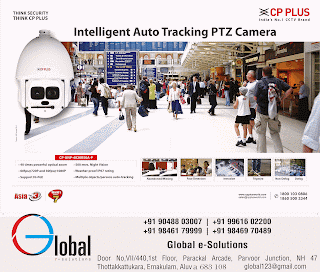Performance and limits of video analytics at the perimeter
Performance and limits of video analytics at the perimeter
 |
| J. Michael Rozmus of AgilityVideo LLC. |
Video analytics does automated monitoring of surveillance cameras, replacing hours of work by human operators. It is especially effective detecting intrusion along a secured perimeter where there is little happening most of the time, making it extremely difficult for a human operator to stay alert.
The performance of video analytics for perimeter intrusion detection is a trade-off between the probability of correctly detecting an intrusion by a person or vehicle and the rate of false alarms. A typical performance curve is shown below.
Of course, we would all like to see 100 percent probability of correct detection and zero false alarms per camera per day, but no present technology makes this possible. So, where on the curve do you want to be? The psychology of human operators plays a big role. If they see too many false alarms, they will stop trusting the system and tend to regard alarms like the boy who falsely cried “Wolf!” and thus got no attention when he actually detected a wolf. Operators may even turn the system off. Thus, it is wise to consider first what level of false alarm your operations can tolerate.
Consider a small military truck depot guarded at night on the perimeter by 10 cameras with video analytics. If the analytics have 95 percent probability of correct detection and one false alarm per camera per 24-hour day, the night guard will be called to only 3-4 false alarms during the night shift, which is probably quite tolerable. With the cameras carefully watching the perimeter, the night guard can also take time to cause deliberate intrusions, verifying that the probability of detection is still sensitive, giving continued confidence in the system.
But consider a case of large deployment. Almost 300 cameras with video analytics guard the Montreal subways from unauthorized intrusion into rail track beds and tunnels. If these cameras were generating one false alarm per camera per day, there would be a flood of false alarms -- one every 4-5 minutes on the average, worst at busy train times because train motion is the primary trigger of false alarms. This would be intolerable. False alarm rate has to be much lower, while maintaining a reasonably high probability of correct detection. Normal operations in Montreal generate about 200 authorized intrusions by work crews every day, giving a very useful ongoing check of sensitivity. The Montreal Metro authority required that there be no more than 0.5 false alarms per camera per day -- about 150 for the whole system. Thus, correct detections would at least be noticeably greater than false alarms.
As actually implemented with video analytics software specifically designed for the metro rail environment, the false alarm rate is less than 0.15 false alarms per camera per day. The ratio of correct detections to false alarms is at least 5 to 1, giving the operators great confidence in the system. The probability of correct detection, informally measured by ongoing authorized intrusion of work crews, is well over 90 percent. This performance is among the best you can expect from intrusion detection with video analytics.
In summary: (1) Large deployments require much better performance than small deployments; (2) First require a false alarm rate that is acceptable in your specific operations, then check to see if the probability of correct detection is sufficiently sensitive.
Another important aspect of video analytics performance is range. Using a given camera, at what distance can video analytics distinguish a person from other “objects,” such as deer or blowing trash? The very best video analytics requires about 2 pixels per foot or 60-70 total pixels on the “target” to confidently recognize a walking or running human being. The 320 x 240 image below illustrates this limit.
The false alarm rate and range of video analytics used with standard day/night cameras can be negatively affected by weather conditions. Dense fog is an obvious bad case. Thermal cameras are the best choice with video analytics for outdoor perimeter intrusion detection because long-wave infrared radiation passes through fog, rain, snow, etc. better than visible light. (See the example image below in which a warm human intruder jumping a fence stands out clearly in black against the relatively cool natural background that is much lighter.)
Until recently, the cost of thermal cameras has been prohibitive in many situations, but recent product introductions have lowered the cost of rugged outdoor 320 x 240 thermal cameras considerably, to less than $3,000. Using the range limits described above, the long lens model of such a camera can guard several hundred meters of fence line using high quality video analytics.









Comments
Post a Comment